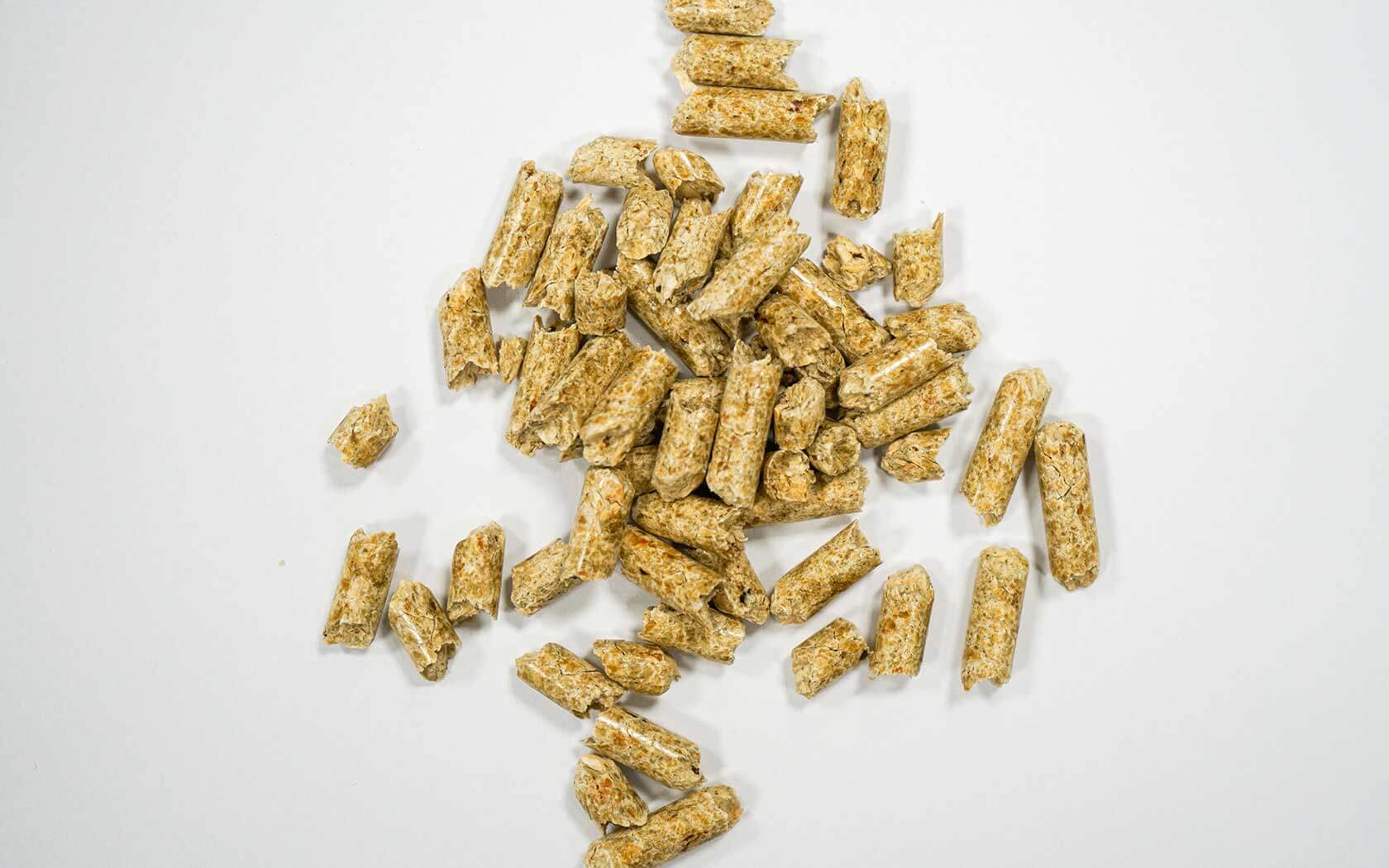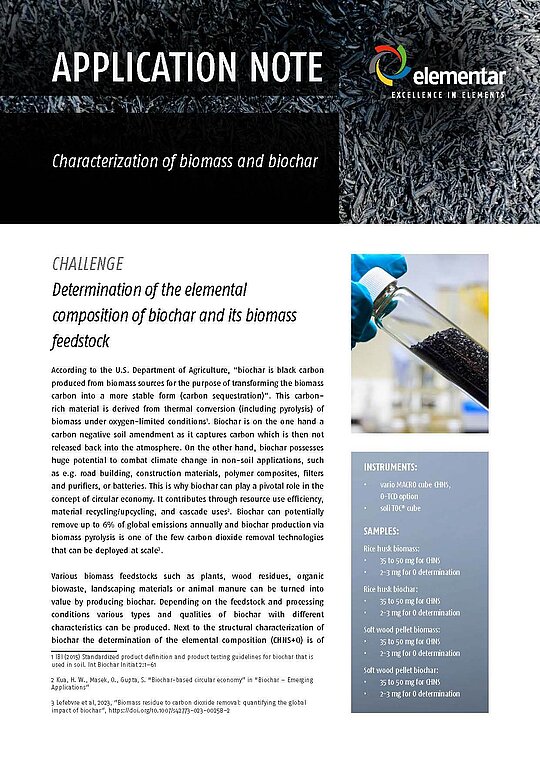Biochar: Emerging Carbon Removal Technology

Biochar has the potential to remove 6% of global carbon dioxide emissions annually and can be deployed at scale. Therefore it is expected to play a pivotal role in the concept of circular economy. This charcoal-like substance is produced by pyrolysis of different kinds of biomass feedstock in a controlled process. Professor Mauro Giorcelli, Associated Professor at the Department of Applied Science and Technology (DISAT) at the Politecnico di Torino and board member of the Italian Biochar Association, studies biochar and explores its potential. During his visit to the Elementar headquarters, he provided us with a unique opportunity to delve into the latest advancements in biochar research.
From waste to raw material
Before turning to biochar as his main research topic, Professor Giorcelli studied carbon materials and composites made from carbon tubes and graphene. As these materials are extremely expensive, Professor Giorcelli started investigating biochar and its properties, a cheap and readily available type of carbon material. He found that composites made from biochar had comparable properties to expensive materials made from carbon tubes and graphene. Biochar is therefore a reasonable substitute for expensive carbon materials, using agricultural waste that is converted into a valuable raw material.


Samples from soft wood pellets before (left) and after (right) pyrolysis. Through combustion in the absence of oxygen, the biomass is turned into biochar.
A world of applications
Biochar is not new - it has been used by indigenous cultures to improve soil quality for crop growth for more than 2,000 years. But the potential of biochar goes far beyond this traditional agricultural use and is only now being discovered through in-depth study of its properties. Biochar can be used as a substitute for petroleum-derived carbon materials, for example in composites, opening up a world of applications. According to Mauro Giorcelli, nearly every carbon-black material – like tyres, for example – could be made of biochar. Using more biochar instead of petroleum-based materials would mean less dependence on scarce resources and reducing carbon footprint.
Next to soil applications, Professor Giorcelli sees great potential especially for the use of biochar in cement and concrete in the future – in his opinion this will be “the next large-scale application after the use in agriculture”. Today's cement production releases huge amounts of CO2 into the atmosphere, contributing to global greenhouse gas emissions linked to climate change. These emissions could be drastically reduced by using biochar in cement production, thereby decarbonizing the manufacturing process.
Biochar is the material for the next century.
Professor Mauro Giorcelli, Associated Professor at the Department of Applied Science and Technology (DISAT) at the Politecnico di Torino

The production of biochar is a win-win situation: it can be produced in nearly every village, carbon is stored instead of released into the atmosphere, and because biochar is made from biomass “waste”, it solves the problem of waste disposal while creating a useful new resource that can help decarbonize our economy. It is also conceivable that the production of biochar could become a future source of income for cities and municipalities: if carbon storage in the form of biochar production is paid for with carbon certificates, these can be traded on the global carbon market and thus contribute to the budgets of public authorities.
Because biochar can often be reused - for example, a filter used for water purification can have a second life in another application - some researchers like to describe biochar not as a product, but as a system in which material is never lost, but always transformed and reused.
Analysis is key
All organic waste has the potential to be converted into biochar. The chemical composition of biochar varies depending on the biomass combusted, resulting in different types of biochar with different characteristics and therefore different possible applications. That’s why material analysis is key. Professor Giorcelli believes that elemental analysis has great potential to characterize biochar by determining its organic and inorganic carbon content, so that the best application can be found for each type of biochar.
In addition to characterizing biochar, elemental analysis is also important for quantifying the amount of carbon sequestered when it comes to issuing carbon credits.
A material with huge potential
Whether it's carbon neutrality, carbon sequestration or oil independence, biochar has the potential to play a major role in addressing the big issues facing our society today. We are confident that Professor Giorcelli and his team will contribute to further explore the potential of this long known but newly discovered resource.
Find out more
Characterization of biomass and biochar
For the characterization of biochar and especially for the assessment of its suitability for specific applications, the determination of its elemental composition is of great importance. CHNS+O analysis is a key analytical method for this task.
The Application Note below shows the results of simultaneous CHNS+O determination in biomass feedstocks and pyrolyzed biochar using our vario MACRO cube elemental analyzer. In addition, results for total organic carbon (TOC), total inorganic carbon (TIC), and residual oxidizable carbon (ROC) obtained with our soli TOC® cube are presented.

DOWNLOAD YOUR COPY
Fill in the form to receive your download link per e-mail.
Your contractual consideration for the free provision of the download is the subscription to our personalized newsletter. By clicking on the “download now” button, you therefore declare your acceptance of the receipt of personalized newsletters by e-mail by Elementar Analysensysteme GmbH and its group companiesas well as the evaluation of your user behavior in this regard and - if available - the merging of this data with your data in our customer database.
In order to receive newsletters from our group companies, it is necessary to transfer your above-mentioned personal data to these companies. We point out that these are partly located in so-called unsafe third countries outside the EU/EEA, in which no adequate level of data protection (e.g. by adequacy decision of the EU, Art. 45 GDPR) is guaranteed. In these countries, you may not be able to enforce your rights as a data subject, or only to a limited extent. In addition, it is possible that local government agencies access your data to a disproportionate extent. The data transfer is based on Art. 49 para. 1 lit. b) GDPR.
You are aware that the subscription to our personalized newsletter represents the contractual consideration that you provide for the free provision of the download. You can unsubscribe from the newsletter at any time with effect for the future. You can object to the future use of your data for advertising purposes at any time. For further information, please refer to our privacy policy.
Do not miss any new articles
NEWSLETTER
We will constantly publish new blog articles. Register for our newsletter to stay up-to-date and get informed about latest blog articles, news and trends.
